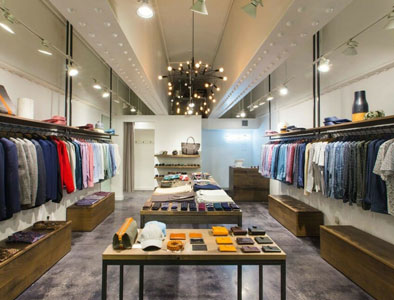In an constantly changing shopping landscape, keeping in front of the rivals requires more than just simply maintaining your inventory full. Retail renovation has emerged a crucial approach for companies seeking to rejuvenate their in-store environments and elevate the shopping experience. This process surpasses just appearance; it can revitalize your store, increase profits, and align the establishment with modern customer desires. With shopping habits shift and preferences evolve, knowing when and how to refurbish is essential for success.
Understanding what store renovation involves and realizing its importance is the initial step in developing an engaging space that attracts and retains shoppers. Whether investigate this site 's by means of upgrading design, smart use of space, or using green initiatives, each refurbishment project provides an chance to transform your brand and create a memorable shopping experience. In click site , we will investigate future trends in store renovation, providing insights into advantages, best practices, and creative methods that will change your store into a bustling center for connecting with shoppers.
Comprehending Retail Refurbishment
Retail refurbishment refers to the process of updating pre-existing retail environments to improve their visual appeal, operational efficiency, and overall shopping experience. This entails making strategic changes to the setup, design, and atmosphere of a store to create an welcoming environment that not only draws fresh customers but also retains current ones. As retail trends transform, businesses must modify their environments to stay relevant, making refurbishment a crucial aspect of modern retail strategy.
The need for retail refurbishment often arises from evolving consumer preferences, innovations in technology, or changes in market trends. A effectively renovated store can more closely align with modern brand values and consumer expectations, acting as a symbol of a company's dedication to superiority and creativity. By upgrading the physical space, retailers can create a more engaging shopping experience, prompting customers to spend additional time and money in the store.
Channeling funds in retail refurbishment can yield significant returns in numerous forms, including higher foot traffic, improved sales, and augmented brand perception. However, the decision to refurbish should be informed by thorough analysis of the market landscape and specific signs that indicate a need for change. Regardless of whether it is antiquated decor, poorly designed layouts, or an uninviting environment, recognizing these factors can help retailers in planning effective refurbishment projects that connect with their desired clientele.
Benefits and Best Practices
Retail refurbishment offers numerous benefits that can significantly impact a business's success. One of the most notable benefits is the refreshing of the brand image, which attracts new customers and keeps existing ones. A carefully planned refurbishment can successfully communicate the brand's essence and values, leading to increased customer loyalty. Improved aesthetics, layout, and functionality can create a more enjoyable shopping experience, ultimately driving increased sales and fostering a positive image of the brand.
To maximize the effectiveness of a retail refurbishment, it is crucial to implement best practices throughout the process. This includes conducting thorough market research to grasp customer preferences and trends. Engaging with customers for feedback on design concepts can provide essential insights and ensure that the refurbishment aligns with their wants. Additionally, collaborating with expert designers and contractors who specialize in retail can result in creative and efficient solutions that improve the overall design and efficiency of the space.
Environmental responsibility is another essential consideration in retail refurbishment. Implementing eco-friendly materials and energy-efficient solutions not only supports sustainability, but it can also attract environmentally conscious consumers. Opting for sustainable practices can reduce long-term operational costs and reinforce the brand’s commitment to ethical practices. By embracing these best practices, retailers can ensure that their refurbishment projects yield substantial long-term benefits, both financially and in terms of customer delight.
Eco-friendliness in Retail Refurbishment
Eco-friendliness is becoming an important aspect of retail refurbishment as companies increasingly acknowledge their responsibility in environmental stewardship. Eco-friendly practices during refurbishment not only help the planet but can also appeal well with shoppers who are more environmentally conscious than ever. By using sustainable materials, energy-efficient systems, and waste minimizing strategies, stores can create environments that reflect their commitment to the planet, thereby enhancing their reputation.

One great way to ensure eco-friendliness in retail refurbishment is to use reusable and renewable materials. Selecting materials such as reclaimed wood, recycled metal, and sustainable textiles can significantly reduce the carbon footprint of the refurbishment process. Additionally, opting for energy-efficient lighting and HVAC systems not only contributes to a more environmentally friendly environment but can lead to long-term cost savings on utility bills. These improvements position the store as a forward-thinking brand, attractive to customers who prioritize eco-friendly practices.
Moreover, implementing creative design solutions that focus on eco-friendliness can create a distinct shopping experience. click site like green walls, energy-efficient display systems, and natural lighting can improve the aesthetic appeal of the store while minimizing environmental impact. By aligning refurbishment efforts with sustainable principles, stores can attract a broader audience, foster loyalty among eco-conscious consumers, and ultimately drive sales while helping the planet.
